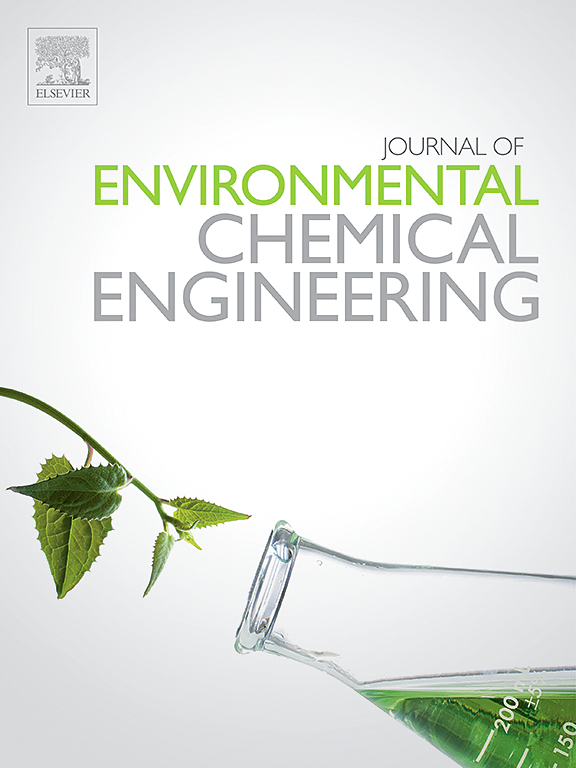Advancements in graphitic carbon nitride based metal tungstate photocatalysts for enhanced energy and environmental remediation
IF 7.4
2区 工程技术
Q1 ENGINEERING, CHEMICAL
引用次数: 0
Abstract
Metal tungstate (MWO4) nanostructures were mixed with g-C3N4 (g-CN) to increase the photocatalytic activity. The use of these nanocomposite materials has shown surprisingly enhanced photocatalytic performance owing to efficient charge separation, enhanced light absorption and enhanced redox activity. The most recent studies aimed at enhancing the photocatalytic activity of metal tungstate (MWO4) based on g-CN heterostructure nanocomposites are thoroughly described in this review. Here, we review the synthetic routes for these heterostructure materials based on precursors used during synthesis, in-situ formation techniques, as well as structural modifications. Moreover, we investigate the basic processes involved in improved photocatalytic performance, including charge separation, extended light absorption, and redox capability. The paper also discusses current developments in g-CN based metal tungstate heterostructures, with an emphasis on MWO4 (M = Zn, Cd, Co, Ni, and Cu) nanostructures. Finally, we analyse the optimization strategies and future potential approaches of designing and fabricating efficient photocatalysts from g-CN based MWO4 heterostructures. Knowledge from this review paper will help to better understanding and will provide direction for future research projects aimed at maximizing the sage of metal tungstate combined with g-CN as a heterostructure photocatalyst for different photocatalytic applications.
石墨型氮化碳钨酸盐金属光催化剂的研究进展
将金属钨酸盐(MWO4)纳米结构与g-C3N4 (g-CN)混合以提高光催化活性。由于有效的电荷分离、增强的光吸收和增强的氧化还原活性,这些纳米复合材料的使用显示出惊人的增强光催化性能。本文综述了近年来国内外在增强金属钨酸盐(MWO4)光催化活性方面的研究进展。本文从合成前驱体、原位形成技术以及结构修饰等方面综述了这些异质结构材料的合成途径。此外,我们还研究了改善光催化性能的基本过程,包括电荷分离、扩展光吸收和氧化还原能力。本文还讨论了基于g-CN的金属钨酸盐异质结构的最新进展,重点是MWO4 (M = Zn, Cd, Co, Ni和Cu)纳米结构。最后,我们分析了基于g-CN的MWO4异质结构设计和制造高效光催化剂的优化策略和未来可能的方法。本文的研究成果将有助于更好地理解钨酸盐与g-CN结合作为异质结构光催化剂在不同光催化领域的应用,并为今后的研究提供方向。
本文章由计算机程序翻译,如有差异,请以英文原文为准。
求助全文
约1分钟内获得全文
求助全文
来源期刊

Journal of Environmental Chemical Engineering
Environmental Science-Pollution
CiteScore
11.40
自引率
6.50%
发文量
2017
审稿时长
27 days
期刊介绍:
The Journal of Environmental Chemical Engineering (JECE) serves as a platform for the dissemination of original and innovative research focusing on the advancement of environmentally-friendly, sustainable technologies. JECE emphasizes the transition towards a carbon-neutral circular economy and a self-sufficient bio-based economy. Topics covered include soil, water, wastewater, and air decontamination; pollution monitoring, prevention, and control; advanced analytics, sensors, impact and risk assessment methodologies in environmental chemical engineering; resource recovery (water, nutrients, materials, energy); industrial ecology; valorization of waste streams; waste management (including e-waste); climate-water-energy-food nexus; novel materials for environmental, chemical, and energy applications; sustainability and environmental safety; water digitalization, water data science, and machine learning; process integration and intensification; recent developments in green chemistry for synthesis, catalysis, and energy; and original research on contaminants of emerging concern, persistent chemicals, and priority substances, including microplastics, nanoplastics, nanomaterials, micropollutants, antimicrobial resistance genes, and emerging pathogens (viruses, bacteria, parasites) of environmental significance.
 求助内容:
求助内容: 应助结果提醒方式:
应助结果提醒方式:


